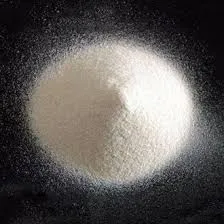
ئیلول . 17, 2024 11:17 Back to list
HPMC Safety - Ensuring the Safe Use of Hydroxypropyl Methylcellulose
HPMC Safety Understanding the Role of Hydroxypropyl Methylcellulose in Pharmaceuticals
Hydroxypropyl Methylcellulose (HPMC) is a widely used polymer in the pharmaceutical industry, particularly valued for its versatility and efficiency as an excipient. As a crucial component in drug formulation, its safety profile is a primary consideration for manufacturers and consumers alike. This article delves into HPMC safety, emphasizing its applications, benefits, and regulatory status in pharmaceuticals.
HPMC is a cellulose derivative that is soluble in cold water and forms a gel-like solution. Due to its unique properties, it is commonly used as a thickening agent, emulsifier, and stabilizer in various drug formulations, including tablets, capsules, and liquids. The ability of HPMC to retain moisture makes it an ideal choice for controlled-release medications, as it can help regulate the release of active pharmaceutical ingredients (APIs) over an extended period.
.
In addition to its acceptable safety profile, HPMC contributes to improved formulation stability and shelf life. By providing a protective barrier around the drug molecules, HPMC can help prevent degradation caused by environmental factors such as moisture and oxygen. This stability is particularly important in ensuring the efficacy of the medication throughout its shelf life, which is a crucial aspect of pharmaceutical safety.
hpmc safety

Despite its advantages, it is essential for manufacturers to adhere to good manufacturing practices (GMP) to minimize any potential risks associated with HPMC. Quality control measures should be implemented to ensure that the HPMC used in formulations is free from contaminants and meets the required specifications. Regular monitoring and testing for impurities are vital in maintaining the safety and efficacy of drug products.
Furthermore, while HPMC is generally well-tolerated, some individuals may experience sensitivities or allergic reactions. It is important to disclose the presence of HPMC in product labeling to inform consumers with known allergies, allowing them to make safe choices regarding their medications.
The regulatory landscape surrounding HPMC is robust, with guidelines established by organizations such as the FDA and the European Medicines Agency (EMA) governing its use in pharmaceuticals. These regulations ensure that HPMC meets rigorous safety standards before it can be used in medicinal products.
In conclusion, HPMC plays a significant role in the pharmaceutical industry as a safe, effective excipient. Its favorable safety profile, coupled with stringent regulatory oversight and good manufacturing practices, ensures that HPMC can be used with confidence in various drug formulations. As research and development in pharmaceuticals continue to evolve, HPMC will likely remain a critical component, contributing to the formulation of innovative and safe therapeutic solutions.
-
Versatile Hpmc Uses in Different Industries
NewsJun.19,2025
-
Redispersible Powder's Role in Enhancing Durability of Construction Products
NewsJun.19,2025
-
Hydroxyethyl Cellulose Applications Driving Green Industrial Processes
NewsJun.19,2025
-
Exploring Different Redispersible Polymer Powder
NewsJun.19,2025
-
Choosing the Right Mortar Bonding Agent
NewsJun.19,2025
-
Applications and Significance of China Hpmc in Modern Industries
NewsJun.19,2025







